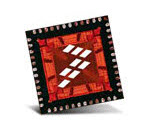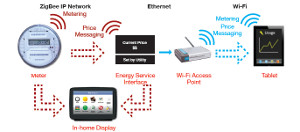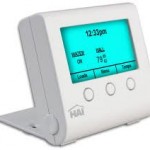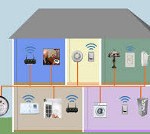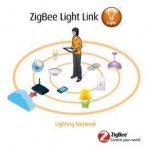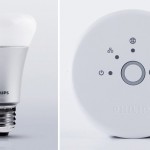The latest version of the popular ZigBee wireless mesh networking standard, ZigBee 3.0, is an attempt to combine the various different components and device profiles within the ZigBee standard into a single, unified specification.
This new ZigBee 3.0 standard aims to provide seamless interoperability across the greatest possible selection of smart Internet-of-Things devices employing ZigBee wireless connectivity – giving consumers and business users access to ZigBee-enabled products and services that will work together seamlessly to meet their needs.
It delivers all the familiar capabilities you expect from ZigBee, while unifying most of the different ZigBee application profiles which are presently in use, such as ZigBee Home Automation and ZigBee Light Link, into a single platform.
ZigBee 3.0 defines more than 130 different specific devices and a wide range of device types, including home automation, lighting, energy management, smart appliances, security, sensors, and healthcare monitoring devices. All the device types, profiles, commands and functionality that are currently defined in the ZigBee PRO standard (which ZigBee 3.0 is based on) are available in ZigBee 3.0.
The initial release of ZigBee 3.0 unifies together the ZigBee Home Automation, ZigBee Light Link, ZigBee Building Automation, ZigBee Retail Services, ZigBee Health Care and ZigBee Telecommunications Services application profiles into the single ZigBee 3.0 specification.
All the application-level functionality of the ZigBee Smart Energy profile is already included in ZigBee 3.0. However, ZigBee Smart Energy includes advanced security features such as elliptic curve cryptography, specifically implemented for use by electricity utilities to enable high levels of security in smart grid applications.
For this reason, the ZigBee Smart Energy application profile is not unified into ZigBee 3.0 at this time. However, the ZigBee Alliance is working to integrate this level of security as an optional feature of ZigBee 3.0, across all application types, and this will allow merging the Smart Energy profile into the ZigBee 3.0 standard.
ZigBee 3.0 builds on the existing ZigBee standard but unifies the market-specific ZigBee application profiles to allow all devices to be wirelessly connected to the same network, irrespective of their market designation and function. The unification of these profiles means that a wide variety of smart devices that previously have used any one of those profiles can now interoperate seamlessly with any other ZigBee device – with the potential to lead to new, innovative IoT applications and solutions.
Home automation and Internet-of-Things products presently on the market have typically targeted a single application area, such as smart lighting using the ZigBee Light Link profile, for example. But as the number of smart, connected IoT devices grows, a typical home or office may obtain more connected devices, and different types of connected devices. But using current ZigBee application profiles, different types of devices cannot always communicate with each other.
A ZigBee Light Link device cannot directly communicate with a ZigBee Home Automation device, and as the number of devices being deployed grows – this just doesn’t make sense in terms of building useful IoT experiences that make sense for consumers.
In the past, there have been separate components to the ZigBee standard because the ZigBee Alliance has focused on optimising their standards for individual markets based on limitations of hardware, such as processor speed and memory size, and the particular requirements of individual markets. Improvements in hardware, like high-performance, low-cost systems-on-chip, combined with the increasing desire to connect a wider variety of devices across market sectors, led the ZigBee Alliance to create the ZigBee 3.0 specification.
The ZigBee Certified program is another crucial part of the ZigBee Alliance’s standards development process. The program allows manufacturers to deliver a variety of products to all kinds of customers with applications that can benefit from ZigBee connectivity, and customers can have confidence in products that “just work”.
The ZigBee Certified process ensures that products built using ZigBee 3.0 function as expected and products from different manufacturers are all able to interoperate with each other. For example, existing ZigBee Certified products based on the ZigBee Home Automation 1.2 or ZigBee Light Link 1.0 profiles are already certified as being interoperable with ZigBee 3.0.
If you’re currently developing a product based on ZigBee Home Automation or ZigBee Light Link, your product will be forward compatible with ZigBee 3.0, so there’s no need to delay your product development while the ZigBee 3.0 specification matures. Your product can still be ZigBee Certified using the older specifications, and this means you’re fully ZigBee 3.0 ready.
Devices that use ZigBee application profiles other than these may need to have a firmware update for compatibility with ZigBee 3.0. The IEEE 802.15.4 standard that defines the physical layer and MAC layer of the network stack remains unchanged in ZigBee 3.0, since ZigBee only defines the higher layers of the network. This means that the radio hardware in your device does not need to be changed or upgraded to move up to ZigBee 3.0 compatibility.

Vendors that have existing products on the market that employ ZigBee profiles such as ZigBee Home Automation are able to continue to release products using these separate application profiles, but the ZigBee Alliance believes most manufacturers will choose to move towards ZigBee 3.0 and the interoperability benefits that it offers.
Here at the LX Group we have end-to-end experience and demonstrated results in the entire process of IoT product development, and we’re ready to help bring your existing or new product ideas to life. Getting started is easy – click here to contact us, telephone 1800 810 124, or just keep in the loop by connecting here.
LX is an award-winning electronics design company based in Sydney, Australia. LX services include full turnkey design, electronics, hardware, software and firmware design. LX specialises in IoT embedded systems and wireless technologies design.
Published by LX Pty Ltd for itself and the LX Group of companies, including LX Design House, LX Solutions and LX Consulting, LX Innovations.

